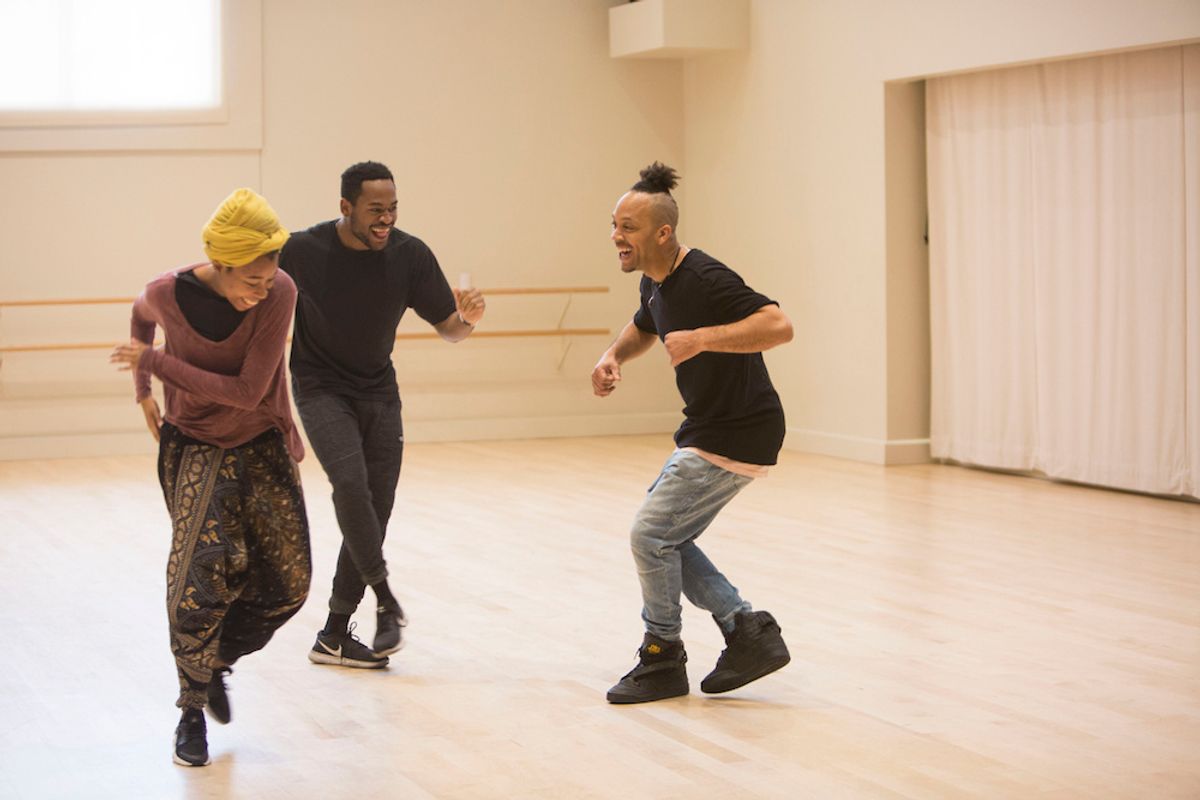
Ask anyone at the University of Southern California’s Glorya Kaufman School of Dance how they feel about assistant professor of practice, d. Sabela grimes, and they automatically begin to sing his praises. Not only is he one of the department’s most beloved and dynamic educators, he is among the most respected and innovative facilitators of dance today. He teaches the foundational elements of black Afro-diasporic vernacular street-dance practices—aka hip hop. But what makes his instruction unique is that his class is not based on any one hip-hop style. It’s not popping or locking, waacking or breaking. And yet, it’s all of these and much, much, much more, as Rose Eichenbaum wrote about in DT‘s August cover feature.
He’s making hip hop accessible for ALL dancers:
Grimes was among the first hired for the Kaufman School’s innovative dance center in 2014. Teaching in a studio setting—particularly in a major university—brings with it many questions about credibility and appropriateness.
“The first day I took Sabela’s class,” says Ardyn Flynt, “I was so befuddled. I remember looking around the room and everyone was whispering, ‘What’s going on?'”
“All of this was foreign to us,” says Flynt. “But then it hit me at the end of freshman year that suddenly I was grooving in a way that had nothing to do with how I grew up, a white girl in a middle-class family from North Carolina. And yet, it felt so good and normal in my body, and at the same time my ballet was improving.”
He’s coined his own “movement system”:
Grimes calls his movement system Funkamental MediKinetics, derived from black vernacular social-dance practices, music, activism and their interconnectedness. Here, he breaks down and transposes movements, actions, rhythms, behaviors and spiritual elements that draw from contemporary, traditional and ongoing Afro-diasporic dance. And he does it in such a way that even one who has had no exposure to Afro–social dance, or may have only trained for years in classical ballet, can use it to achieve more expansive movement expression.
Here he talks about the musicality in hip hop.
His teaching style is all about self-discovery:
“Dancers who come into my class are asked to actively engage and listen to their bodies,” he explains. “For many, it’s the first time they’ve ever been asked to own their own practice. You’re asked to think about who you are, where you are in your life right now, in connection to what the body is doing and who you’re in the room with. That, in and of itself, helps them as dancers, performers and as human beings.”
He’s is proving that ballet and hip hop have more in common than most dancers think:
At Kaufman, freshmen are required to take grimes’ hip-hop class, as well as William Forsythe’s neoclassical form of ballet. One might think that hip hop and classical ballet share little in common. But here that’s not the case, explains Flynt.
“I’ve discovered that grimes’ hip-hop basics—groundedness in the body, arhythmic movements or syncopation and whole-body listening are also integral and inherent in Mr. Forsythe’s reconception of classical ballet,” says Flynt. “It’s because these approaches complement each other so nicely that I’ve been able to improve in ballet and, in fact, in all my movement classes.”
For the full article, pick up a copy of Dance Teacher’s August issue.



